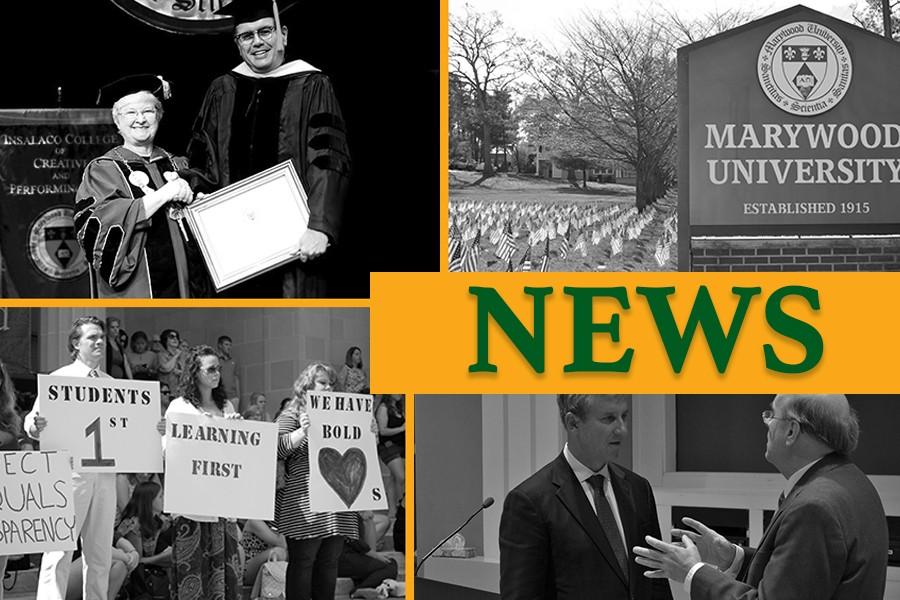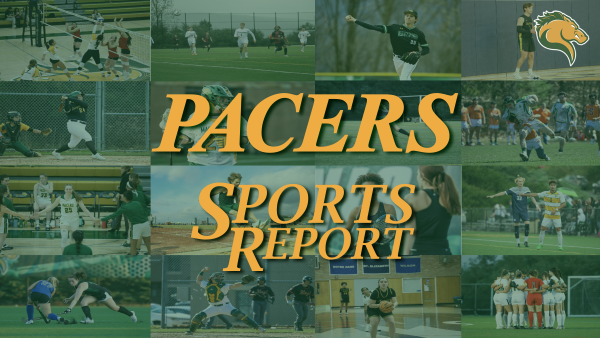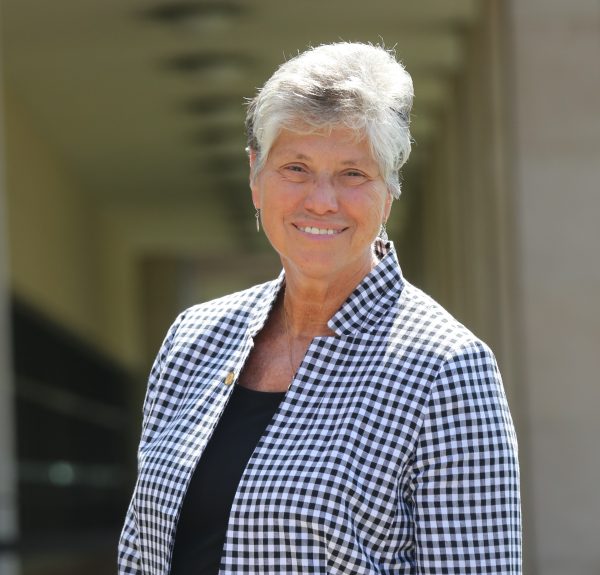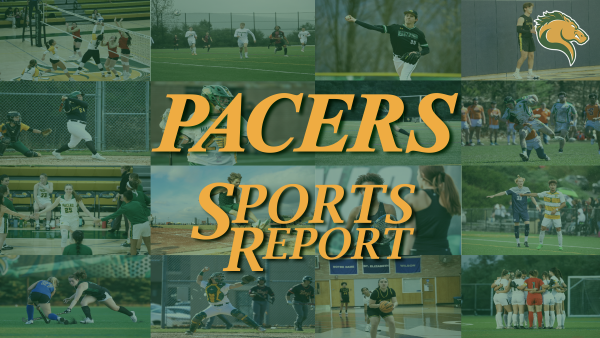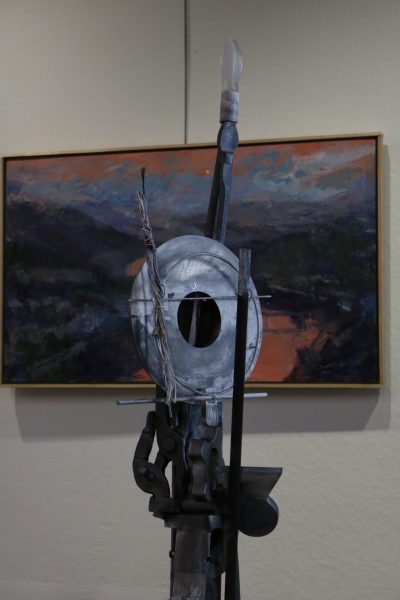Strategic Resource Allocation reports released, reveal recommendations
August 16, 2016
Two reports released late last month revealed the final recommendations from the Strategic Resource Allocation (SRA) Process task forces recommending changes in the amount of resources for certain programs.
The reports detail the ways task force members categorized each program at Marywood. The placements determine which programs should receive the most resources, which should remain unchanged and which might be considered for transformation or elimination.
The two reports consisted of recommendations from both the Support Task Force (STF), which covered support functions and general areas of the university, and the Academic Task Force (ATF), which examined academic programs.
The SRA process began in September 2015 when Marywood hired Larry Goldstein, founder of Campus Strategies, LLC, to train the campus community on how to carry out the resource allocation study. The goal of the process is to reduce university spending by determining how best to allocate financial resources.
In both reports, each program is ranked in a quintile. Programs in Quintile One are candidates for enhanced resourcing. Programs in Quintile Two should continue with no change in resourcing. Programs in Quintile Three should continue with reduced resourcing. Programs in Quintile Four are essential and require transformation. Lastly, programs in Quintile Five are candidates for possible phase-out.
Support Task Force and Academic Task Force Reports categorize programs
The Wood Word obtained copies of both Strategic Resource Allocation reports and analyzed them for common themes that can be generalized from the recommendations in the reports. The STF and ATF reports emphasized that reports detail recommendations, not final determinations for action.
1. Combining
A major theme within the reports was the combining of existing programs. The majority of the STF programs recommended fell into Quintile Four or Quintile Five.
An area for potential combining of programs with the STF report focused on the structure of Marywood’s stand-alone colleges. The report recommended consolidating the four colleges and the School of Architecture into two colleges to reflect the size of the university.
Other areas of STF programs or budgets suggested for combining are the Commencement & Convocation Speakers Committee with the Honorary Degree Committee; International Affairs with Diversity Efforts; and the Veterans Resource Center budget with the Military and Veteran Services budget.
A number of the programs recommended for combining by the ATF fell under Quintile Four in the report.
One ATF recommendation is to combine the separate degrees in Arts Administration into one program with three tracks to create “a strong connection between business and the arts.”
Other suggestions included linking certain courses more closely with existing programs to reduce the cost per student and allow for “better advising and recruiting.”
2. Simplifying
Other recommendations included simplifying programs to reduced required resources. The majority of programs recommended to be simplified fell under Quintile 3, entitled “continue with reduce resourcing.”
This Quintile is described as the “function/area is doing well and can continue to do well with a reduction in human, financial, or physical resources.”
A few areas that fell under this category in the STF included Conference and Event Services, Faculty Recruitment, Faculty Research Initiative and the Student Life Committee.
In the ATF report, academic programs recommended for simplification spanned Quintiles Three through Five.
The ATF, for example, recommends that the Medical Laboratory Science degree possibly be “offered as a track within an existing Science major to streamline courses/costs further.”
Degree programs recommended to be simplified or phased out were cited as having low enrollment or not enough faculty or resources. In total, 24 programs fell under the recommendation to continue with fewer resources, 27 were recommended to be transformed and 37 fell under Quintile Five for possible phase out with additional review.
Some programs under Quintile Five, such as the Bachelor of Arts in Comprehensive Social Science and Master of Science in Early Childhood Intervention, were “voluntarily withdrawn by [their] department[s].”
3. Promoting
Another prominent theme in both reports was the importance of promoting different programs to attract students from outside the Scranton area.
For example, the STF said the athletic recreation facility serves as a “major recruiting tool” and it was recommended that there could be improvements made in how the facility is shared between Marywood students and the outside community.
Additionally, the study abroad program was said to be a tool for recruitment and retention as well as fulfilling Marywood’s core values. According to the STF report, prospective students have a high interest in the possibility of studying abroad.
The ATF suggested that programs such as the Master of Science in Biotechnology and the Bachelor of Science in Computer Science “might benefit from better marketing” and more support.
The ATF report states the enrollment in the new Computer Science program has doubled in the last few years and should be in demand by prospective students. According to the ATF, this program has “great potential to grow even further, provided it is given the necessary administrative support and marketing resources.”
Also, the task force explains that the new Writing major was created as a recruiting tool for the English department in order to avoid declining enrollment. The program fell under Quintile One to be a potential candidate for more resourcing to fund the promotion efforts.
Programs that require more promoting typically fell under Quintile Three in the ATF’s report.
4. Expanding
The majority of the programs recommended for expansion fell into Quintile One under the STF report. This category was described as “function/area is doing well and can be further enhanced with additional human, financial, or physical resources.”
Programs under this category include Academic Advisement, Counseling/Student Development Center, Disability Services, Housing and Residence Life, International Recruitment, Marketing and Communications, Military and Veterans sources, Music Administrative costs, Registrar’s Office and Undergraduate Admissions.
The ATF continually stressed the need for more faculty in order to expand programs. The task force states in the report that the minor in Chemistry has not been working at its maximum potential and may benefit from a more stable rotation of courses, updated facilities and a shift away from a reliance wholly on adjunct faculty.
Some of the programs the task force said would also benefit from more faculty resources included the Bachelors of Arts programs in Art Therapy and also Criminal Justice.
Throughout the report, the task force referred to the faculty cuts that took place earlier this year.
The ATF described the cuts as “precipitous” and mentioned that “several programs were terribly damaged” by these cuts.
The ATF stated in the report that “human resources at Marywood—on both the academic and support side—should be the last resources cut.”
Task force members explain process
The STF report included a letter signed by the task force members explaining the almost year-long process of the SRA.
The STF members emphasized in the letter that given the short amount of time they had to work on this process, the data and information they were able to obtain is [was?] limited.
For a program to be assigned to a certain quintile within the STF report, at least 85 percent of the task force members had to agree on the placement of the program, according to the letter.
The STF members said before any decision is made regarding changes to programs, “senior administration will conduct a rigorous and maximally thorough, data-rich, and contextual examination of that function/area.”
The ATF Report also includes a letter addressed to the members of the SRA Coordinating Committee and colleagues.
The members of the ATF said they referred to Marywood’s mission and core values when making decisions about where to place certain academic programs.
“It is our view that most of Marywood’s programs are genuinely successful and should have been assigned to Quintile Two,” said the ATF members in the letter. “However, it was our charge to organize the campus programs into even quintiles by total costs of programs, and we have done so by grading programs on all the criteria more strictly until the quintiles were roughly equal.”
The letter acknowledged that the process has flaws, but that the task force was not influenced by anyone and “looked at these programs both individually and collectively as the departments in question urged [them] to do.”
At the end of the letter, the ATF members acknowledged their colleagues and said each colleague cares deeply about Marywood students and has worked hard to serve them. The members added, “we face very hard choices moving forward.”
SRA Reports to be reviewed
Marywood’s newly named Interim Provost Denise Wilbur and Interim Vice President for Business Affairs William McGarry emailed a letter to faculty and staff on July 25. The letter updated the Marywood campus community about the SRA process. Wilbur and McGarry said the recommendations from the reports will be posted on the SRA website for faculty and staff to review. Wilbur and McGarry were unavailable for comment.
According to this letter, faculty and staff had two weeks, which ended on Aug. 8, to email the Coordinating Committee with their thoughts and opinions about the reports. After this period, the Coordinating Committee will send the final report, which includes the final recommendations from the task forces, a summary of the campus review of the recommendations and Coordinating Committee’s reconciliation of conflicting recommendations, to Sr. Mary Persico, IHM, Ed.D., president of Marywood.
On the same day the SRA reports were released, The Wood Word and TV-Marywood asked Sr. Mary about the reports. Sr. Mary said she was not yet able to closely study the reports, but she did comment on the anticipated future plans for the recommendations.
“I think the first thing we need to do is look at the results of that report and determine in conversation with other groups which of their suggestions are worth doing, so we can sit down and do what we have to do to streamline our programs, to right-size anything that maybe isn’t right-sized and really be able to use our resources to the best of our ability,” said Sr. Mary.
Sr. Mary added, “We might do something like that [the SRA process] in the future, but for now we’ll take the results of that process and see how we can mine the suggestions to the advantage of the university.”
Contact the writers: [email protected], [email protected]
Twitter: @RLookerTWW, @JBonacciTWW



